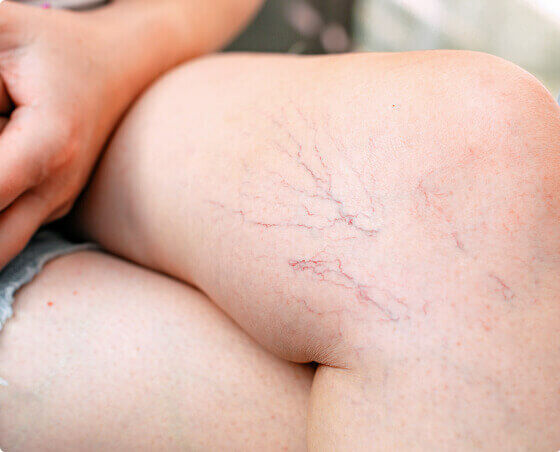
Spider veins are highly common, but there are a few simple lifestyle changes you can make to help prevent them.
The short answer is: lifestyle changes need to play a part in every method of vein treatment. As for when lifestyle changes are the only treatment method needed depends on your individual condition and the pain associated with it. Consulting with your Center for Vein doctor is the only way to determine if lifestyle changes will be enough to manage your chronic venous insufficiency.
Altering some of the ways you live your life is never easy. Lifestyle changes can be challenging to begin with, but as you form new and healthier routines and habits, you'll start to notice the positive effect they're having. Soon after realizing this, you'll be happily welcoming additional lifestyle changes to continue feeling, looking, and living better.
Designed to manage pain and reduce more spider veins from forming, changing your lifestyle may prevent new cases or reduce appearance of existing ones but it won’t eliminate the spider veins completely.
At Center for Vein Restoration, we understand the impact that spider veins can have on your confidence and comfort. Explore the range of effective spider vein treatment types, from minimally invasive procedures to advanced therapies designed to help you achieve healthy, beautiful legs. Take a step towards vein health and renewed confidence with our treatment solutions offered by caring, experienced, board-certified vein doctors.
Visual sclerotherapy is used strictly for spider vein treatment. A sclerosing solution is injected directly into the affected veins. This solution irritates the vein lining, leading to the vein walls sticking together and eventually closing off. The body eventually reabsorbs the closed vein, reducing the spider veins' appearance. Visual sclerotherapy is often used for smaller veins and offers a minimally invasive option for improving both the cosmetic appearance and potential discomfort associated with spider veins.
A minimally invasive, office-based procedure, foam sclerotherapy involves creating a foam-like mixture of a sclerosing agent and air or gas. This foam has a thicker consistency than liquid (as used in traditional liquid sclerotherapy), allowing it to displace blood more effectively within the vein and come into more significant contact with the vein walls.
During the foam sclerotherapy procedure, the foam is carefully injected into the targeted problem vein using ultrasound guidance for accuracy. The foam irritates the vein lining, causing it to collapse and seal shut. Over time, the body naturally absorbs the closed vein and disappears.